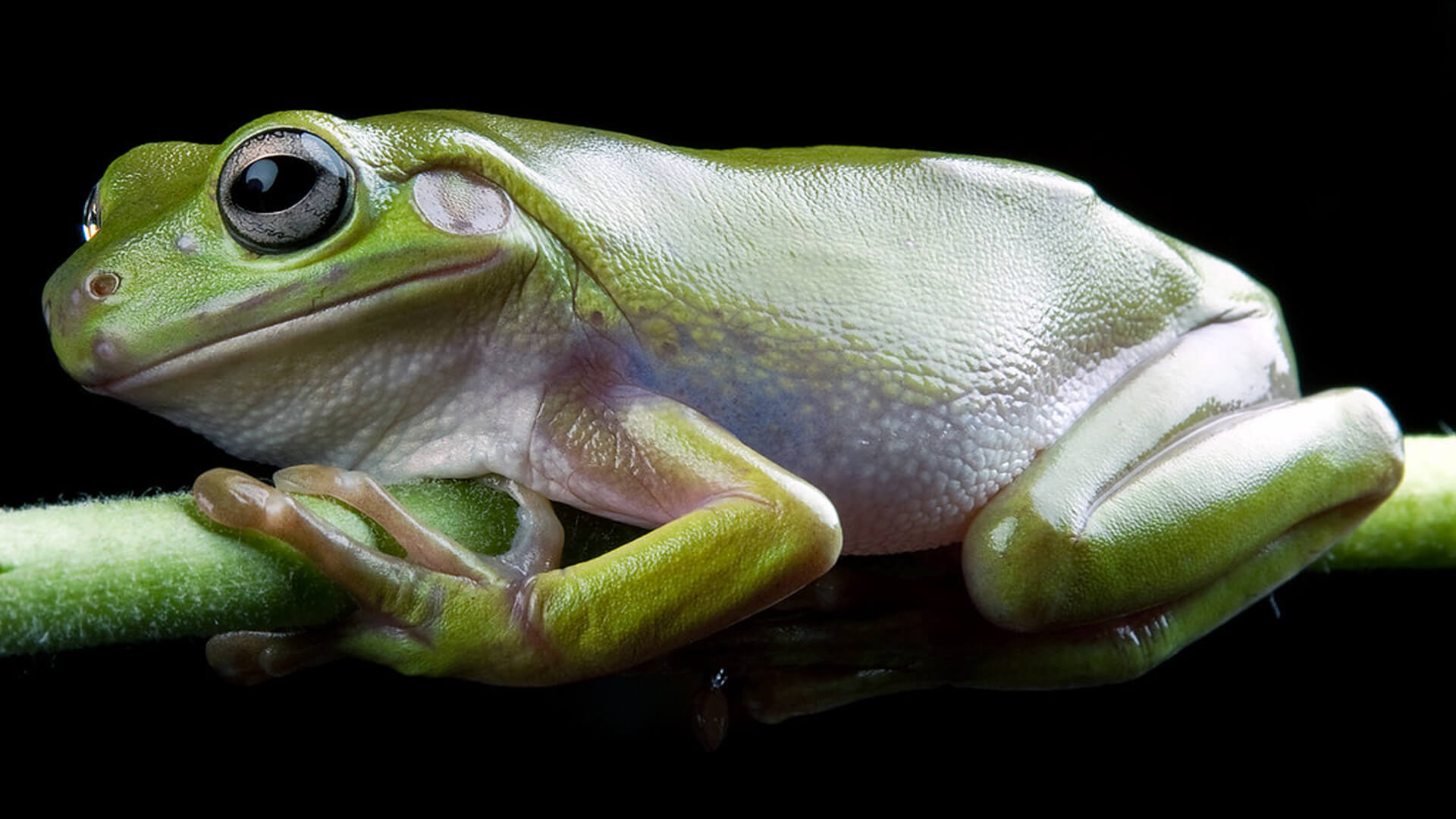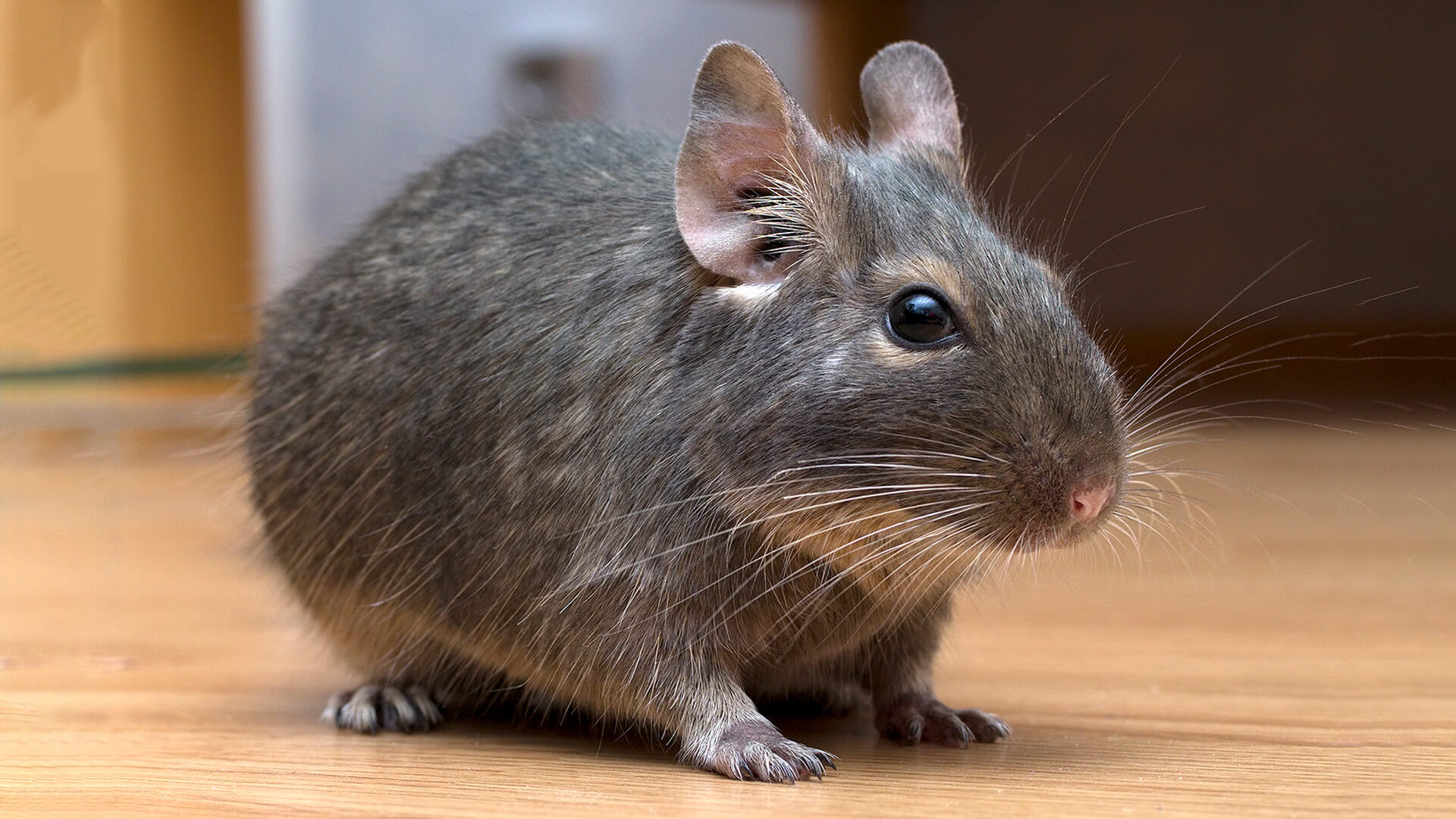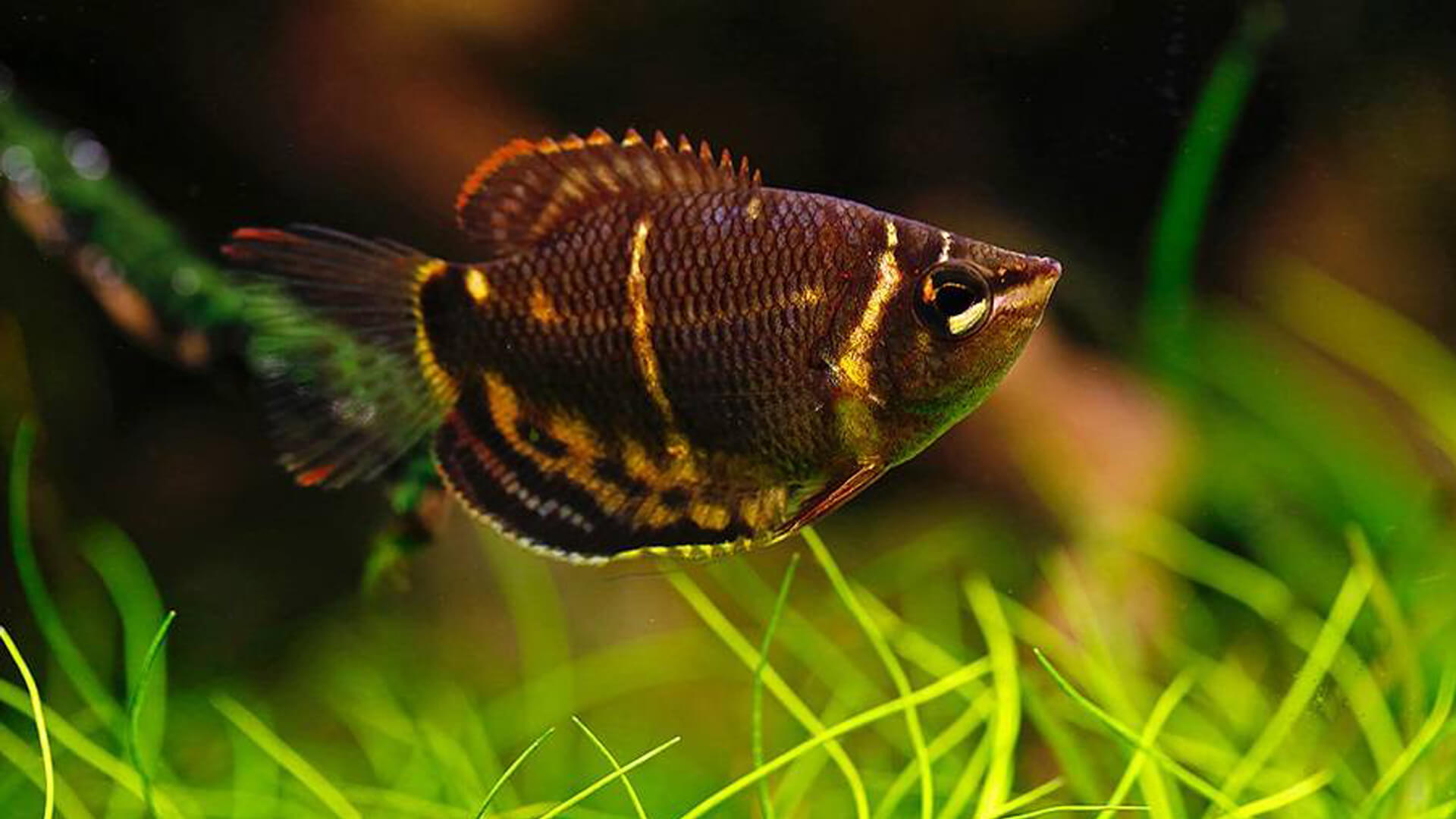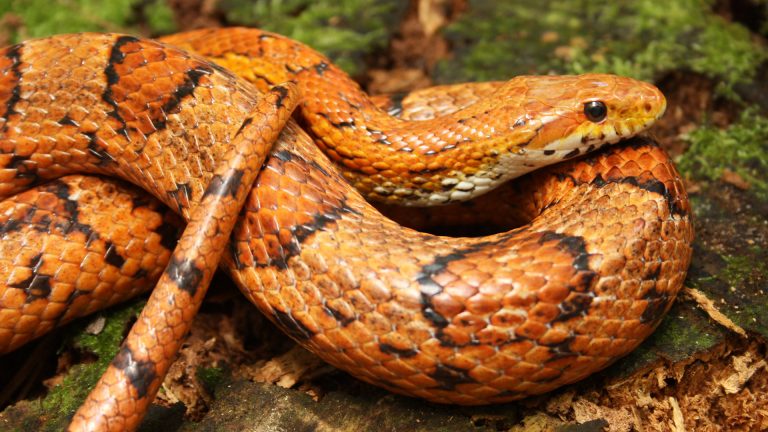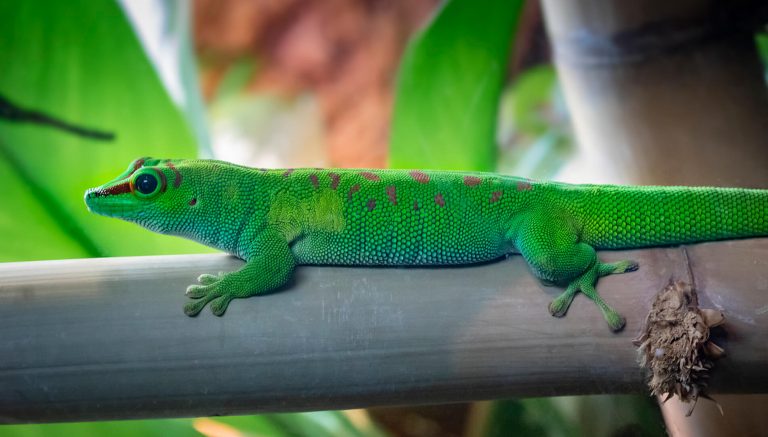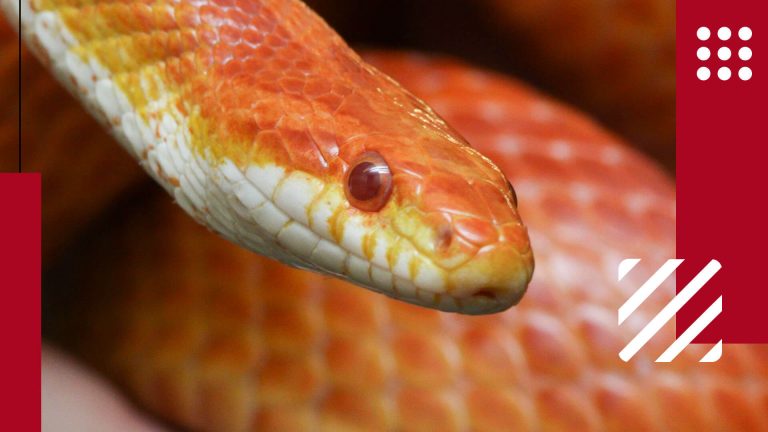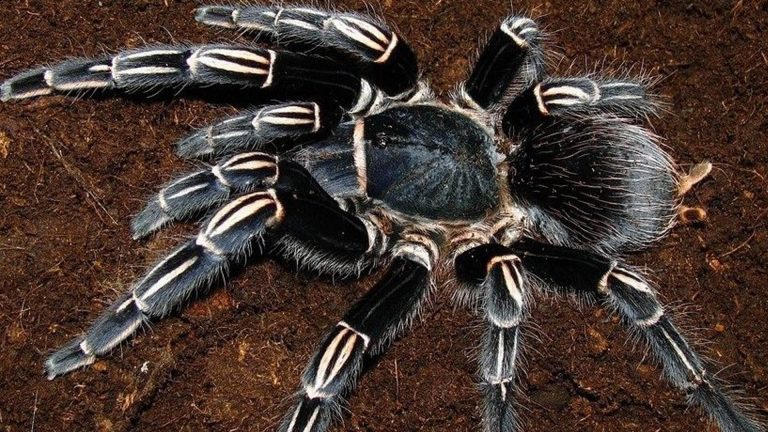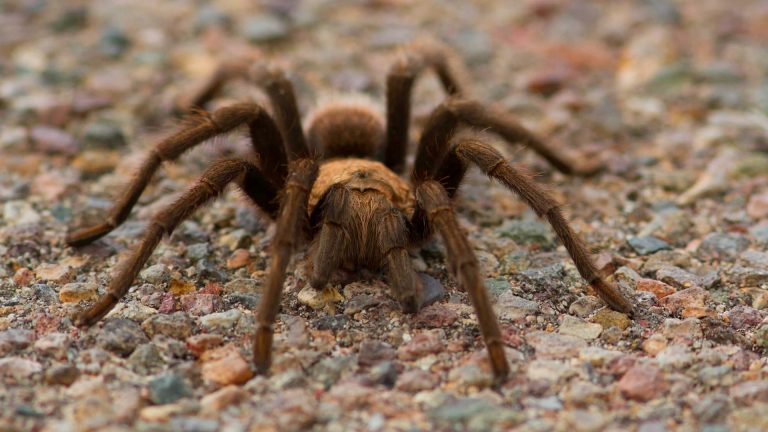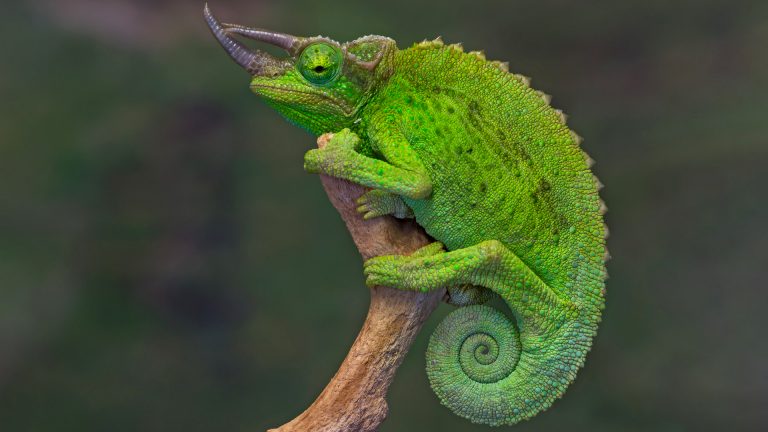Senegal chameleon is one of the most favored choices for any reptile lover who is seeking to adopt a chameleon. They are exceptionally beautiful and when they change their colors, one cannot help but look at them in awe. These chameleons are not known to be very active but watching them is enough entertainment in itself. It is interesting to note that the color of their bodies changes with their moods. If their color appears bright, it is safe to assume that they are happy and cheerful. Meanwhile, if it changes to black or brown, they are probably feeling dull or sad.
These chameleons originally belong to West Africa. They prefer to live in solitude so the owners are always suggested to keep only one Senegal chameleon at a time. If there is more than one of them, they should be housed separately. Undoubtedly, these pet chameleons are very interesting to keep but they are quite high-maintenance. Due to their high requirements, they are not suitable for beginners. Only a person or a family with previous experience of reptile-keeping are advised to bring these chameleons home. For other guidance, one can rely on this article.
Distinctive Features of Senegal Chameleon
| Scientific Name | Chamaeleo senegalensis |
| Lifespan | Up to 5 years |
| Color | Variable, usually shades of green, brown, and yellow |
| Size | Up to 8 inches |
| Health Risk | Moderate |
| Enclosure | Minimum 18x18x36 inches |
| Tankmates | Solitary species, best kept alone |
| Unique Trait | Ability to change color and independent eye movement |
| Famous For | Its impressive camouflage abilities |
| Temperament | Can be territorial and defensive |
| Maintenance | High |
| Adaptability | Indoor |
| Behavior | Not recommended for young children |
| Personality | Mostly solitary and calm |
| Social | Solitary, can be aggressive towards other chameleons |
Senegal chameleons grow around 8 inches in size and live up to 5 years. Their beautiful appearance is one thing that makes them stand out but there are others features too that will hook the interest of people. Like any other chameleon, they use their tongue to catch their prey. But, it's to be noted that the size of a Senegal chameleon's tongue is twice the size of its body. And, they are really quick to catch their prey.
These chameleons are highly territorial in behavior. They tend to get very aggressive towards other animals or even humans who try to get inside their territories without their consent. Their aggressive nature is a major reason why the owners should avoid handling them. Now, before moving on to the next section, here is a quick guide that will come in handy while taking care of the pet chameleon.
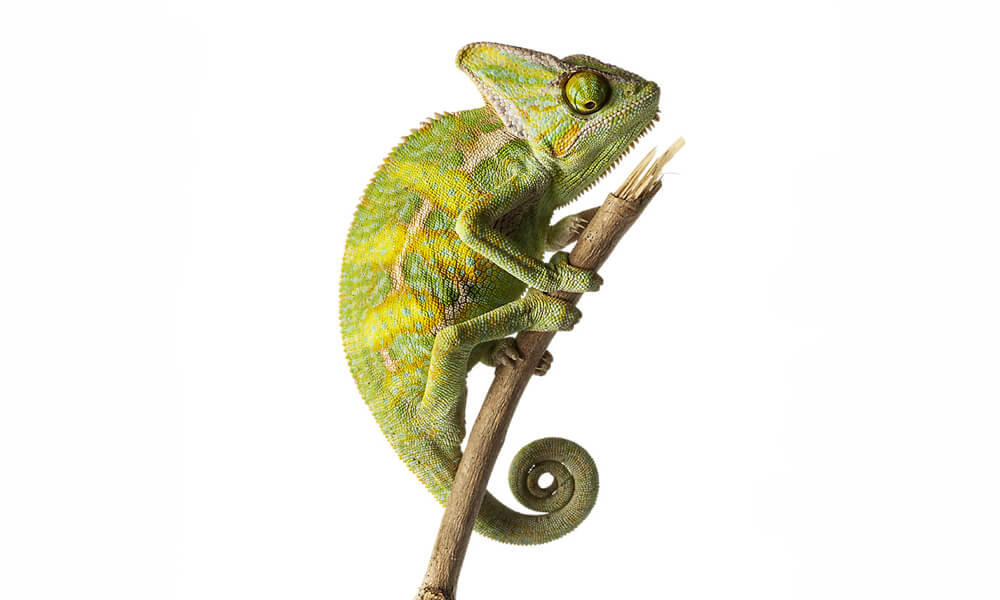
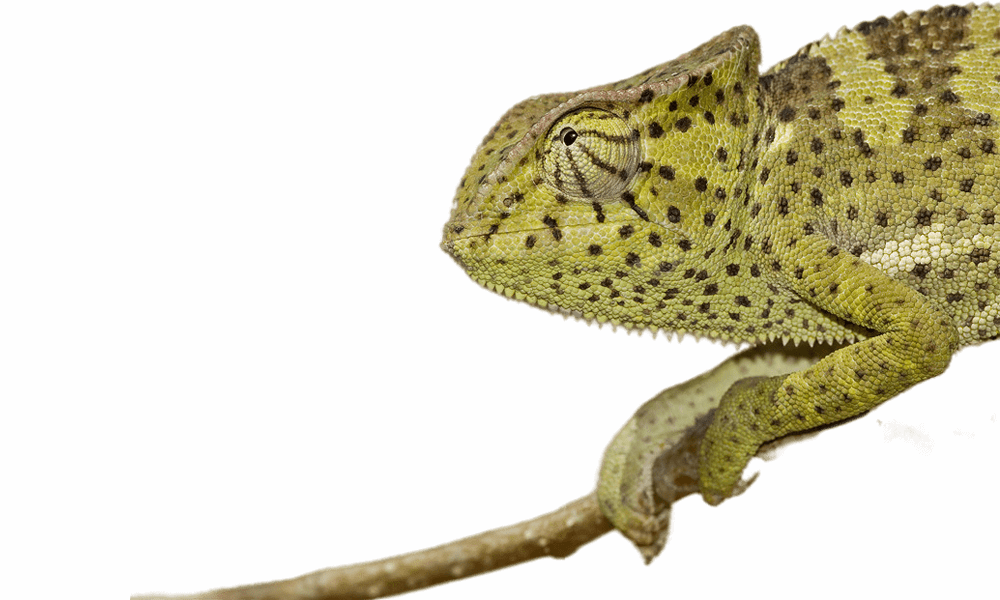
How to Take Care of Pet Senegal Chameleon?
Keeping a Senegal chameleon can be a little difficult at times but once the owners get habitual, it won't be that bad. It is important to keep the important guidelines in mind. For instance, they shouldn't be handled carelessly. It is suggested to avoid handling them as much as possible. For other information regarding the suitable habitat and diet, keep reading!
How to Setup Habitat for Pet Senegal Chameleon?
Senegal chameleons are best suited to a mesh or screened enclosure. The enclosure needs to be a tall one and there should be enough plants and other resources for them to climb on. It is to be noted that these chameleons love to climb and they climb vertically rather than from side to side. Vines and artificial plants can be used to keep in the enclosure. There should be wet leaves as well because they absorb water from the plants and not drink it from the bowl.
Humidity is very essential for the Senegal chameleons. Therefore, a dripper system should be added to the enclosure. If the owner prefers to do it manually, they can spray the water several times a day. Also, the temperature of the enclosure should never be less than 70 degrees Fahrenheit. UVB lightings are yet another significant factor in the growth of these chameleons. Without UVB rays, they won't even be able to absorb calcium leading to metabolic diseases. All these conditions should be maintained at all times.
What to Feed Your Pet Senegal Chameleon?
Senegal chameleons primarily feed on live insects. This includes crickets, mealworms, and other such insects. For this, the owners can either keep a separate cage for insects or catch new insects every day. The former is more feasible even though both options will require extra effort. The insects that are being fed to the pet chameleon should be gut-loaded as well. Providing the insects with a nutritious diet will ultimately provide nutrition to the chameleon.
It's noteworthy that only the living insects should be offered to these chameleons. They like to catch their food by themselves. As for the quantity, one should never put too many insects at a time. Provide only the amount they can finish in a short span of time. If there are too many insects, they can attack and injure the pet chameleon. Even if they are dead, they start decomposing which results in compromised hygiene.
Health Concerns of Pet Senegal Chameleon
Senegal chameleons are usually healthy but are prone to a few diseases that are common to different kinds of reptiles. For instance, they can easily get dehydrated if there is not enough humidity. That's why it is essential to keep the enclosure to humid at all times. These chameleons are also vulnerable to parasitic infections. It is mostly because their diet consists of wild insects. For the same reason, it is advised to get the pets checked frequently. Metabolic diseases can hit them too which is why the owners should ensure that their pet is getting enough calcium. In any case, regular check-ups are essential to maintain the health of the pet chameleon.
What People Are Reading:
Frequently Asked Questions About Pet Senegal Chameleons
Some generally asked questions about pet Senegal chameleon are answered below:
How much does a Senegal chameleon cost?
A Senegal chameleon would cost you around $35.
Do Senegal chameleons make good pets?
Yes, Senegal chameleons make good pets if they are given proper care.
Are Senegal Chameleons friendly?
Senegal chameleons are not very friendly. Instead of that, they are territorial and act aggressively if someone enters their region.
What is the best chameleon for beginners?
The veiled chameleon is one of the best chameleons for beginners.
Do Senegal chameleons eat fruit?
Senegal chameleons need live insects as their primary diet and usually don't accept any fruit or vegetable.

